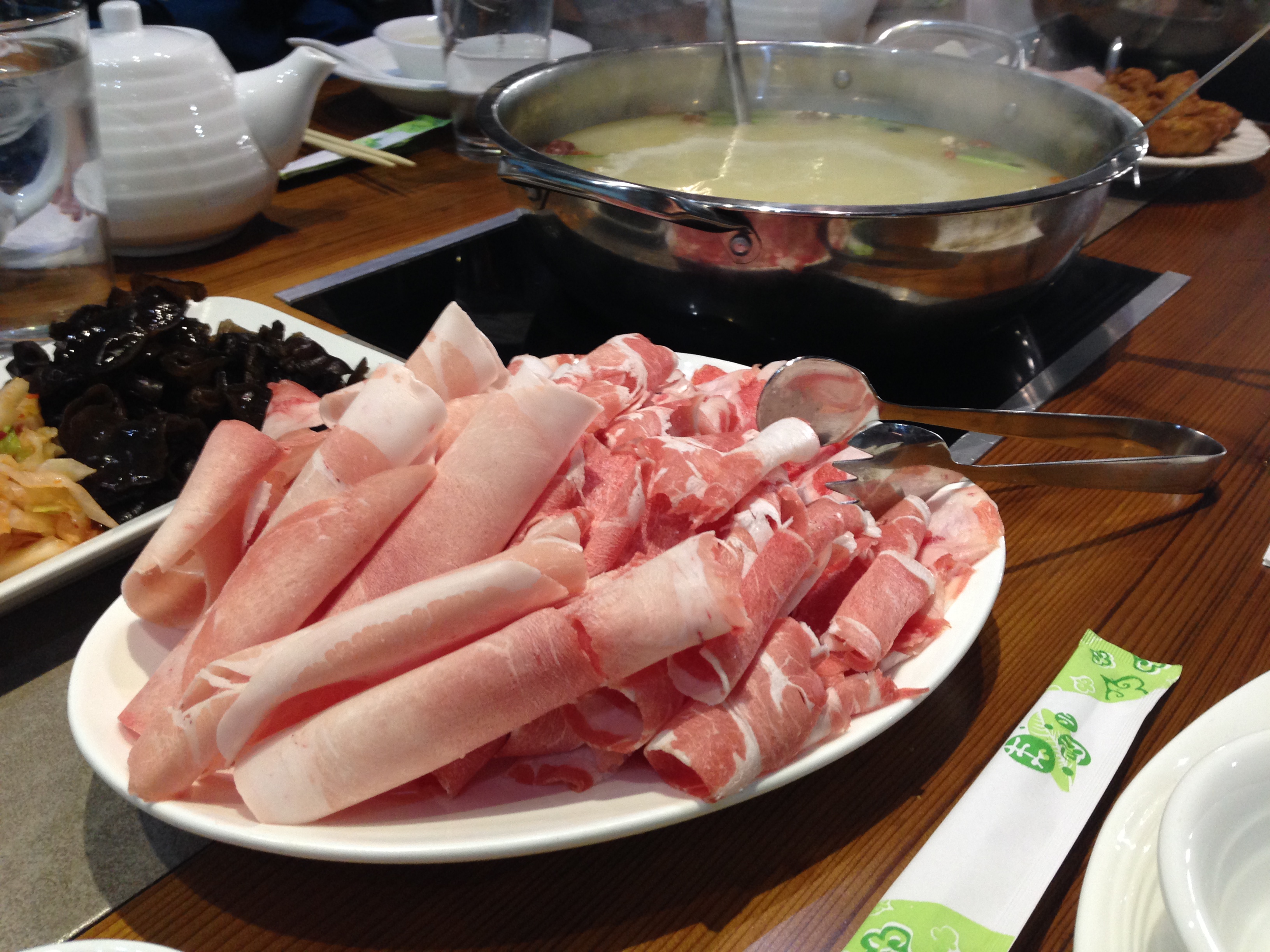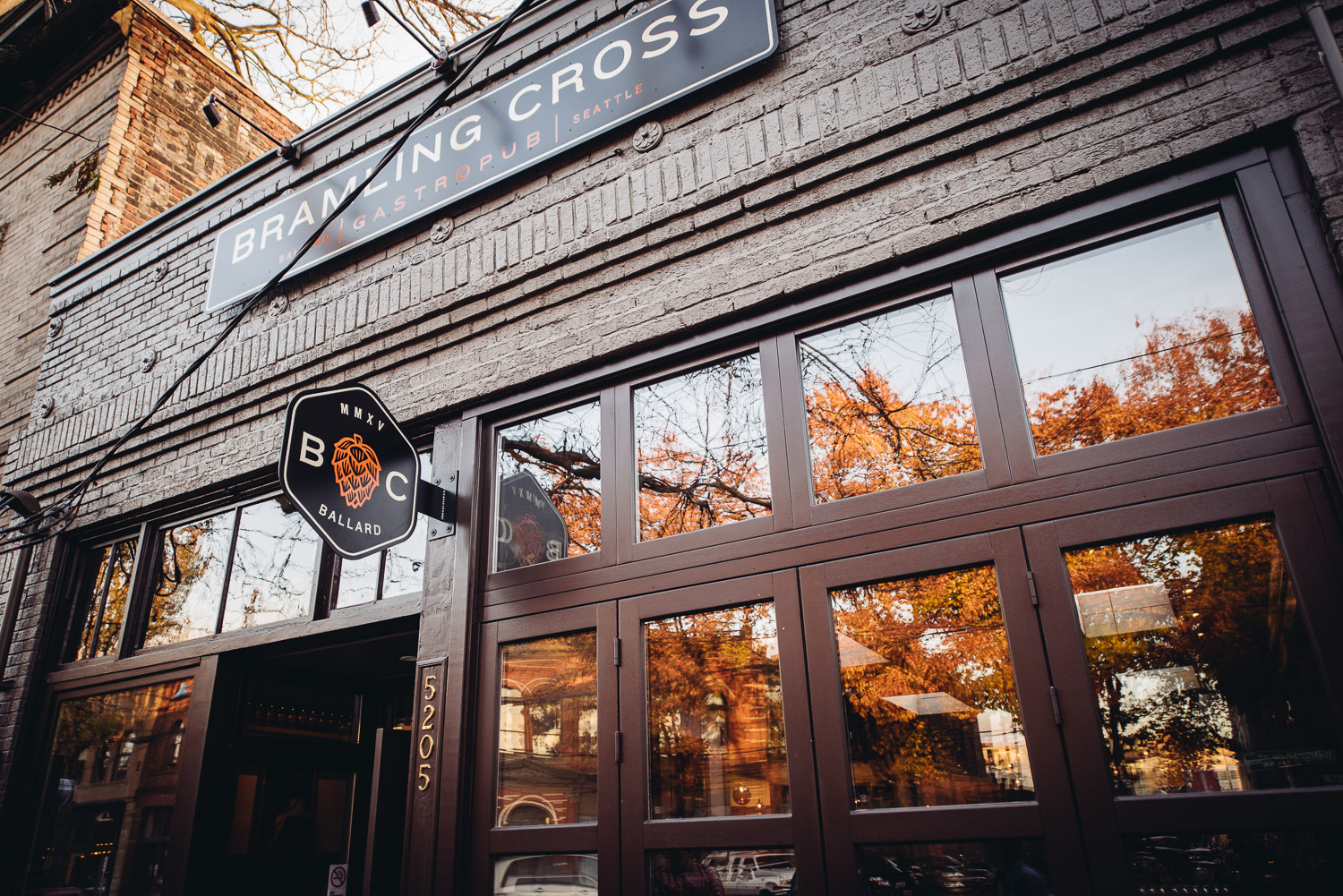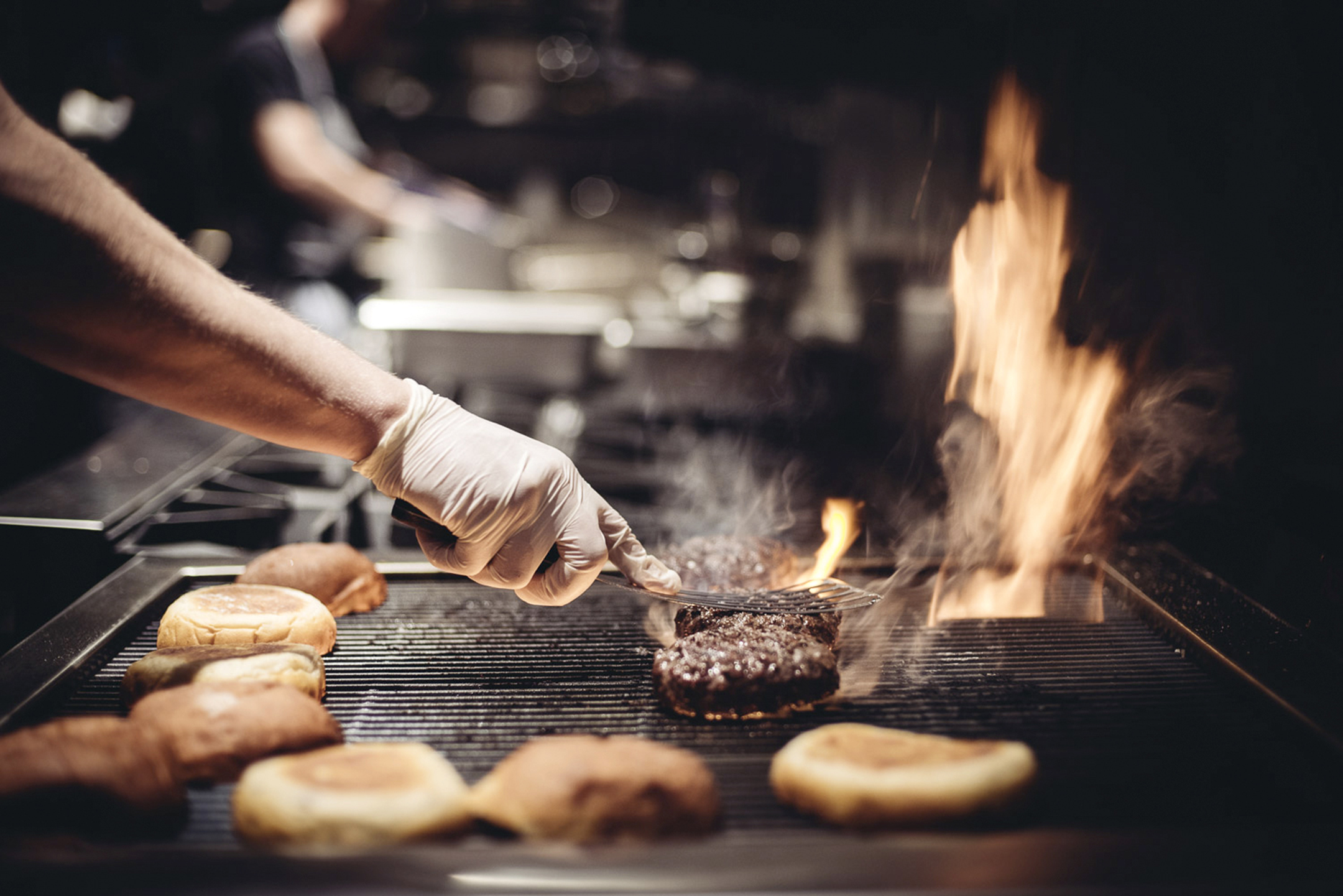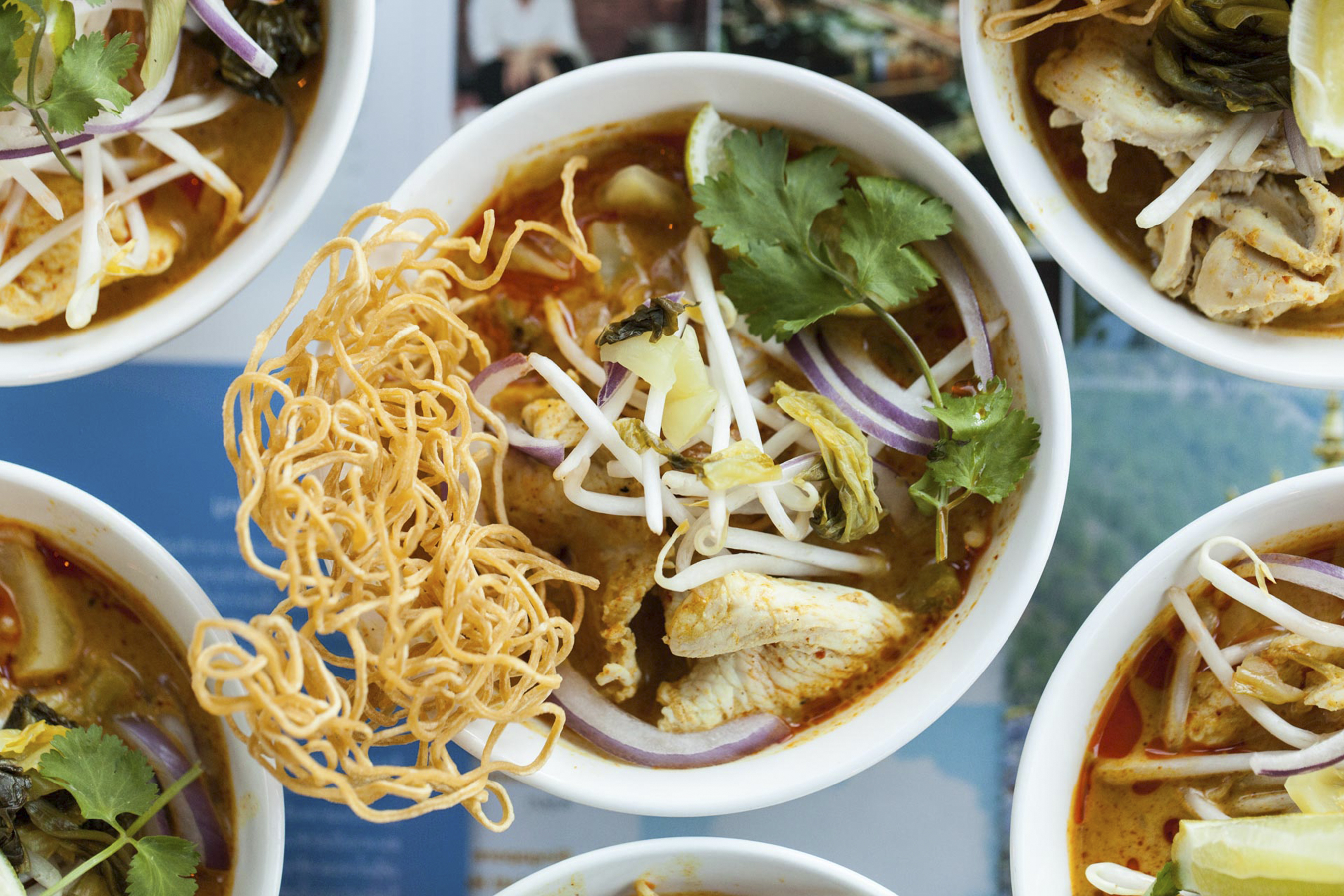While Little Sheep Mongolian Hot Pot restaurants are ubiquitous throughout China, besides California, New York/New Jersey and Texas, Washington is one of few locations here in the U.S. Still celebrating their grand opening in the ID (there’s also an older one in Bellevue), the cavernous, ultra-sleek digs with lots of aqua blue and silver offer the chain’s very unique version of the hot pot experience: different from, say, Taiwanese or Korean hot pot.
However, while their website claims that Mongolian hot pot dates back 1,000 years to when Mongol horsemen would fill their helmets with water, meat and vegetables and place them over fire to heat, popular opinion is that this theory is in fact a fictitious Taiwanese creation. What is distinctly Mongolian is the predominance of meat (particularly mutton). Whatever the case, the resulting tradition is an undeniably popular one. From the moment you enter Little Sheep, your nose may be surprised by what you smell; not sesame oil, garlic, or other typical Chinese-associated smells but, instead, coriander. That’s because in northern China, bordering Mongolia, the food is spiced more similarly to Middle Eastern or Indian fare. It’s also evidenced when the steaming broth bases (original, spicy or half and half) are set down to continue cooking on the electric tabletops. Floating in all the broths are 36 different types of herbs and spices including huge slabs of ginseng and ginger, yes, but also big black cardamom pods that resemble a walnut or nutmeg shell, goji berries (a red edible berry grown in China) and jujubes. Jujubes are an edible berry-like fruit also referred to as Chinese or Indian dates; indeed, they have a soft, slightly sweet date-like texture and taste. At first, I thought they were raisins.About those broths: to my disappointment, we had the original in order to accommodate a few spice-adverse people in our party of ten. The spicy version comes with “mala” chili oil – an incredibly fiery sauce made from Sichuan peppercorns and chili pepper. I’ll be back for that for sure. For my initiation into Mongolian Hot Pot, I was fortunate to be the guest at a Taiwanese-American friend’s birthday celebration. Fortunate because, in the Chinese birthday tradition, when the host invites you for a meal, the bill is on them. Also, it provided an authoritative selection of the dozens upon dozens of ingredients to add to the deeply-flavored broths. We went with three pots of soup (essentially one for every three people) and to them we tossed in fast-cooking, thinly-sliced pieces of angus beef, ribeye, pork shoulder and lamb leg (we skipped the more adventurous pork kidney, tripe, pork blood and goose intestine, as well as the Mongolian staple, mutton, because we had some picky children joining us). Next came trays of green mussels in their shell, fish fillets (not sure what kind of whitefish, but it was tasty and able to stand up to the fast boil), and the head-on shrimp. Besides the various cuts of meat, we threw in cuttlefish balls, fried fish cakes, lamb wontons (my favorite of all!) and pork dumplings. I would have liked to try the fish balls with roe and the hokkigai surf clams; perhaps next time….Set with proteins, in came the vegetables (everything from baby bok choy and winter melon to Chinese yam and lotus root) and noodles (udon, vermicelli and yam noodles to name a few). For palate-cleansing sides, cold spicy kimchi and wood ear mushrooms. Other interesting sides: five spice edamame, grilled corn and Mongolian beef pie. While the dozens of options may feel overwhelming, in China they have at least twice as many, offered at buffet-style bars. And finally there’s the sauces to mix into your individual small bowls; we chose a Chinese barbeque sauce and a thicker sesame-based sauce; both delicious. Speaking of the small bowls, they cause you to lose track of how much you’re actually eating since you’re caught in a constant loop of refilling them. It’s like when someone keeps topping off your glass of wine before you fully finish it, and you go home surprisingly toasted. Though the sheer amount of ingredients here is impressive in itself, what’s more commendable is the freshness of them: the bloody-red prime cuts of meat, the verdant leafy greens. It looks like everything came right off a farmer’s market stand or the butcher’s block. Add to that the all-you-can-eat price accessibility: $19.99 for adults (plus a $2 broth fee) and $13.99 for children 6-11 (plus the $2 for broth) and you have no reason – besides your burgeoning belt – to keep you from tasting as many of the scrumptious selections as possible. Another plate of scallops? A meatball platter? Quail eggs? Bring it on!
nsprinkle@seattleweekly.com








